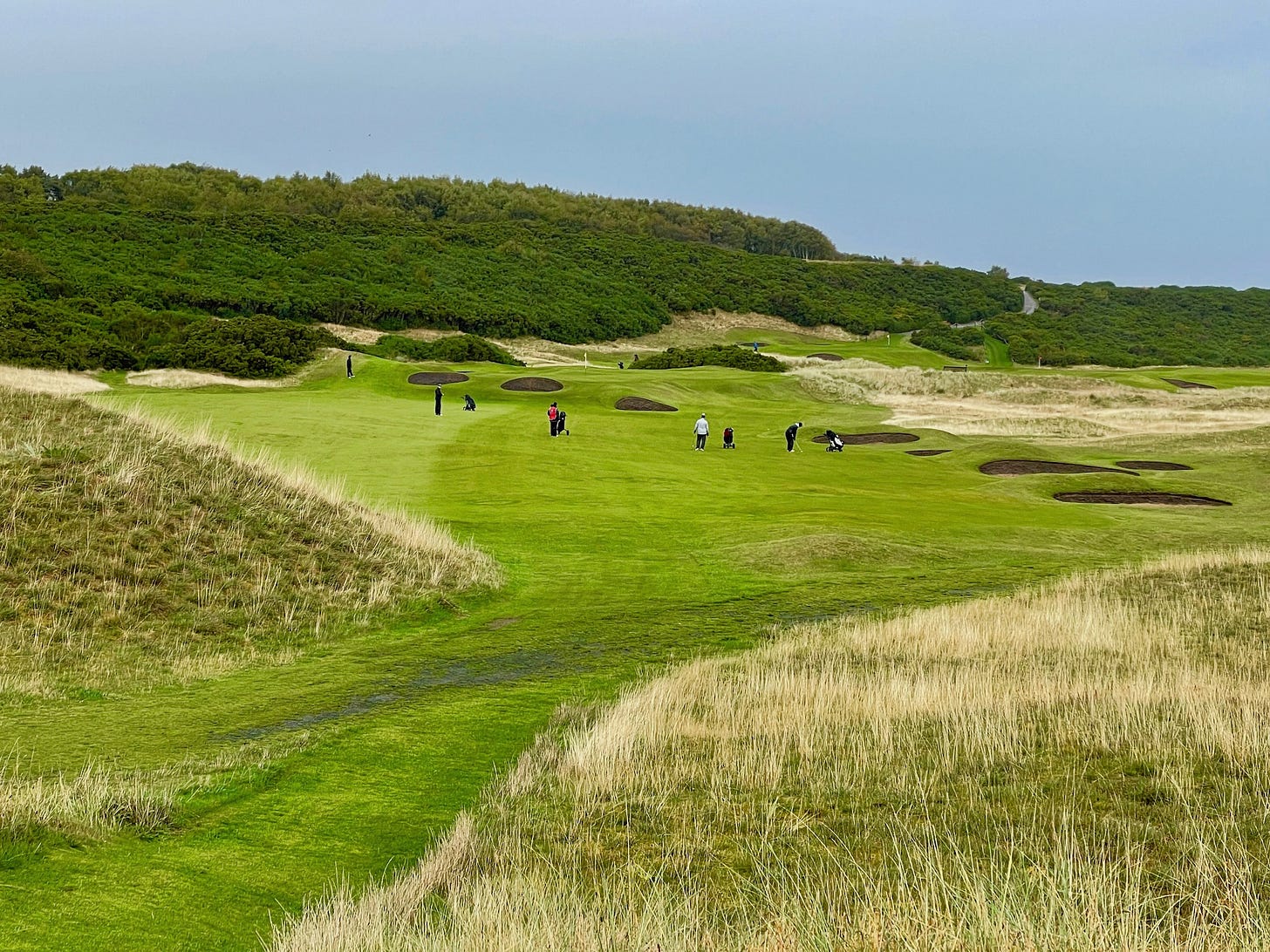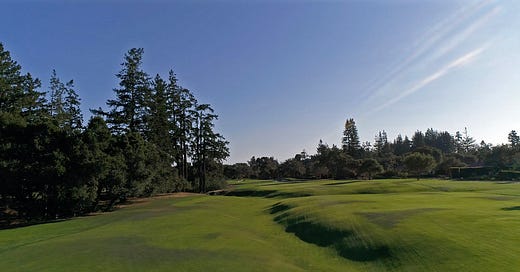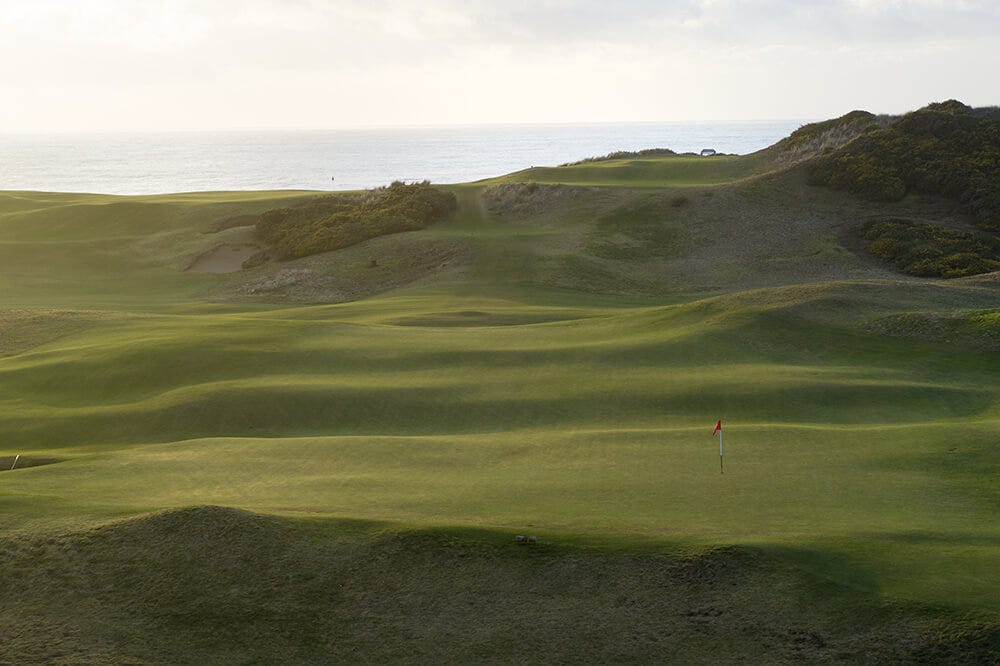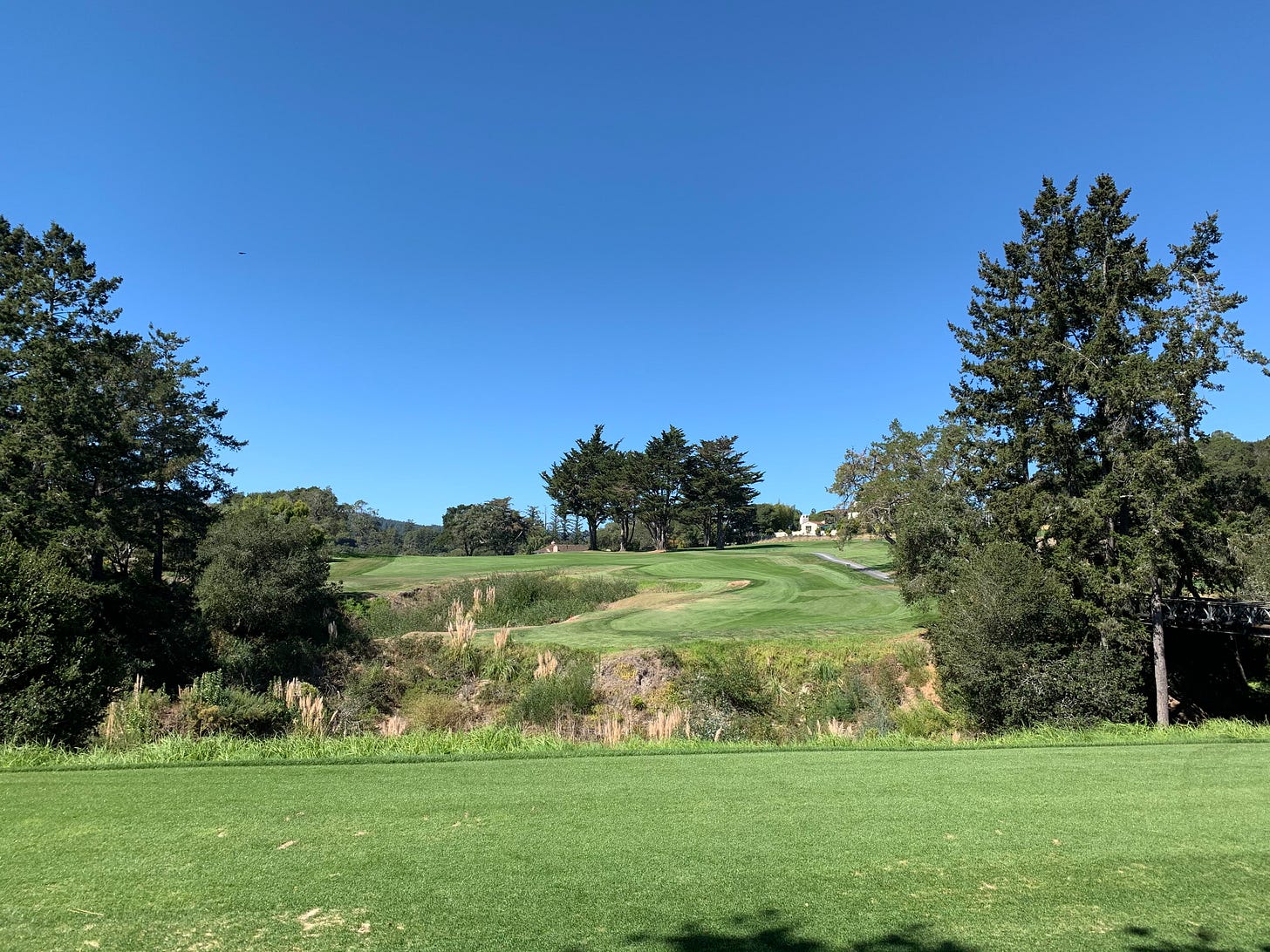As an avid golf sicko, one of my favorite podcasts out there is The Fried Egg, and I’ve used some episodes as inspirations for posts - my favorite routing at Bandon, etc.
They just released a new podcast series called Designing Golf, and if the first few episodes are any indication, it’s a keeper. To start with, host Garrett Morrison sat with producer P.J. Clark to talk about Architecture 101. This is a must-listen for anyone curious about golf architecture and why some people care so much about it.
But the subsequent episode is what this post is focusing on, where Morrison interviewed golfer and architect Geoff Ogilvy about the four courses that shaped his thinking about golf.
I won’t spoil his answers - go listen to it yourself.
But it made me think - with the caveat that I know much, much less about golf than either of these guys - about what golf courses really formed how I think about golf. I’ll choose the number four to mirror the framework above, and for lack of a better method, I’ll go in order of when I played these courses.
Old Macdonald, Bandon, OR. Architect: Tom Doak
This should not be much of a surprise to anyone who has read my reviews here on Bandon Dunes. I have a tattoo of the Ghost Tree, and approximately 40,020 pieces of clothing or golf gear with that tree on it. But it’s not just because I love that tree - of course, I do - but because the course itself absolutely jarred me. I first played it on my first visit to Bandon in 2017. We played it in the cold, foggy morning and it added an ethereal element to the course as it unfolded. At the time, I didn’t know who Tom Doak was, let alone C.B. Macdonald, or what a “template” hole was. Our caddie explained some of it, but it was also my first experience, anywhere, of realizing that I had to use the ground to get the golf ball to go where I wanted. I remember cresting the hill to the ocean view on #7, of learning what a Biarritz was on the following par-3 (which I thought about for MONTHS afterwards) and the Maiden hole on #14, where I intentionally hit a chip off the green to get it to roll back to the spot on the green I was aiming for. It was revelatory.
I remember coming back from Bandon Dunes and - as is the unwritten law for those traveling there - thinking about how I’d rate the courses. And every time I thought about it, I realized the one I KEPT thinking about was Old Mac. It’s not the easiest course, or the prettiest, and it’s clear that some visitors flat out don’t like it. That’s fine - there are some great classes in college many folks don’t opt to take, and that’s what Old Macdonald is for me.
Royal Dornoch, Inverness Scotland. Architect: Old Tom Morris
About a year after visiting Bandon for the first time, I took my first overseas golf trip. The second course we played was Royal Dornoch. On the first hole, I landed in my first true pot bunker (which I’d somehow avoided at Castle Stuart the prior day). But cresting the hill to the 3rd tee, where you literally see almost the entire rest of the course open up in front of you…I hope I never forget that. I really remember sitting on the tee on the 5th hole and realizing that everywhere I thought about aiming had an upside and a downside - if I go there, I’m safe but so far from the green..if I go there, look at all those bunkers in the way. And what will my angle to the green be? All of these are basic strategic questions I had really never thought to ask - but it felt impossible to not notice them on that course.

Dornoch is easily the best Scottish course that isn’t part of The Open, for various reasons that make sense (largely around logistics). But every time I see the Dornoch crest on someone’s bag, hat or headcover, I know I’ve run into someone who gets it.
Pasatiempo, Santa Cruz, CA. Architect: Dr. Alister MacKenzie
Listen, did I plan on starting with courses from Doak, Old Tom and the Good Doctor? I did not. But Pasatiempo was actually the first course I thought of when I asked myself the question on this post. But about a year after coming back from Scotland, I joined some friends in a weekend of golf that was centered around Pasatiempo.
It’s one of the first courses I can remember - one of the only ones, in fact - where I could remember all 18 holes immediately after playing and equally so weeks later. I had seen photos of Pasatiempo before playing it, often from the tee box on 10.
But it wasn’t until playing it that I realized how strategic the course is. It’s not about bombing the longest drive. The greens are a total menace - and even moreso now, I’d think, after a complete greens renovation. If the 3rd hole is perhaps unbelievably tough for a par-3, so be it. I absolutely loved that the course is set up for any kind of golfer, and it’s good enough to host elite collegiate tournaments. While I’d experienced fairways on true links courses over in Scotland and in Bandon too, I’d never seen a fairway like the 14th at Pasatiempo. (That’s because there probably ISN’T another fairway quite like it.) Here’s a quote from his writeup on The Fried Egg:
The 14th’s dominant feature is its swale that snakes across the fairway. The swale has massive scale and is a natural extension of the ravines that dominate Pasatiempo’s back nine. It is about six yards wide and eight feet deep. It’s part of the fairway, but serves as a hazard for the hole. A ball that finds the swale will leave a blind shot and an uneven lie. It runs across three-quarters of the fairway on a diagonal, driving the strategy of the hole. It’s one of the most unique, distinct and thought-provoking features that I have ever come across.
I can’t wait to get back to Pasatiempo and see what new questions it’s asking.
Tralee, Kerry, Ireland. Architect: Arnold Palmer
This is the most surprising entry for me, because it’s so recent - but also because in some way, Tralee was not remotely a course I left for Ireland particularly excited about. The general consensus is that the front nine is … fine, while the back nine, dictated mostly by the insane natural landscape, is where the action is. To be clear, the back nine is one of the most stunning nine holes I’ve ever played.
But where Tralee got me thinking was actually on the front nine. The holes are REALLY interesting, but more importantly, it’s a fantastic use of the land.
Holes 1-9 are on a very, very small piece of property. The land near them that the holes aren’t on are really NOT usable for golf. And none of this is really noticeable until you are heading up the fairway on 9 and take a look back, and realize how condensed it all is. I award full marks to Mr. Palmer for leveraging what nature gave him on the back nine, but he doesn’t earn nearly enough credit for taking a fairly small parcel of land on the front nine and making some tremendous golf holes out of them.
Tralee made me look at new golf courses I play and think about why the architect decided to lay it out the way he did. What constraints did the land force? What sacrifices could have been made to make it better?
Questions like this are what scratches the golf nerd’s itch inside me, and Tralee was shockingly a big part of that.
It feels weird to not include The Old Course at St. Andrews here, or Royal County Down, or other amazing courses I’ve been lucky enough to play. To some degree, I was too hyped up to really let myself soak in enough of those courses to leave as much of a lasting impact as I’d hope. (And as such, I must play them again!) But these are the four courses that came to mind for me.
What courses helped you think about golf in the way that you do?









LOVE that an Arnold Palmer course made this list! I find myself weirdly in love with Arnie courses on a regular basis